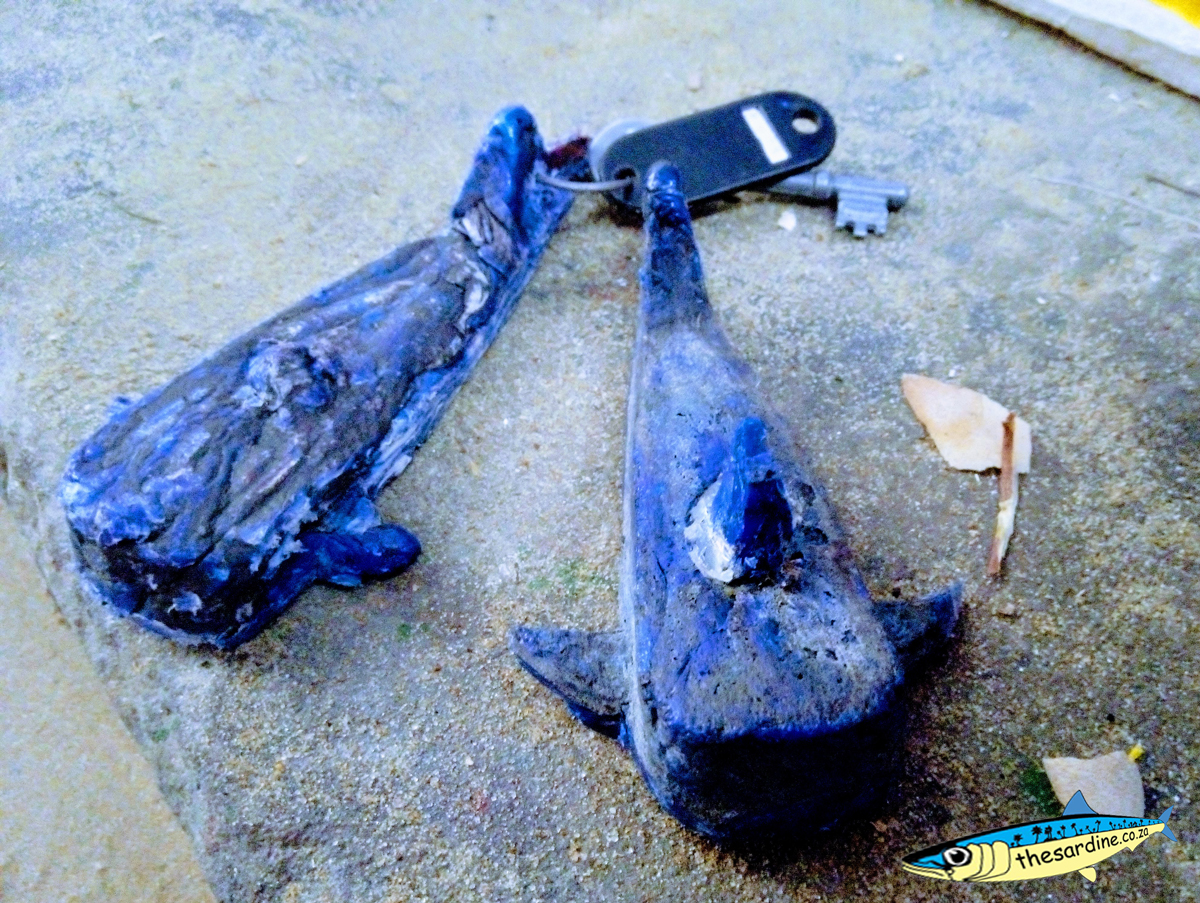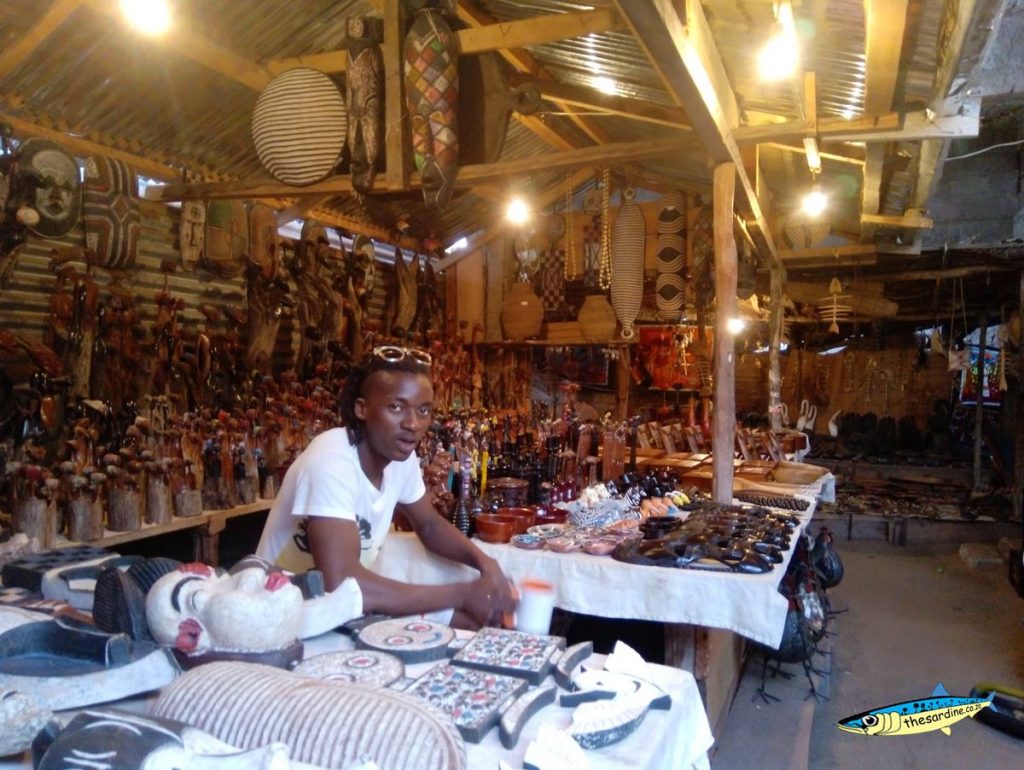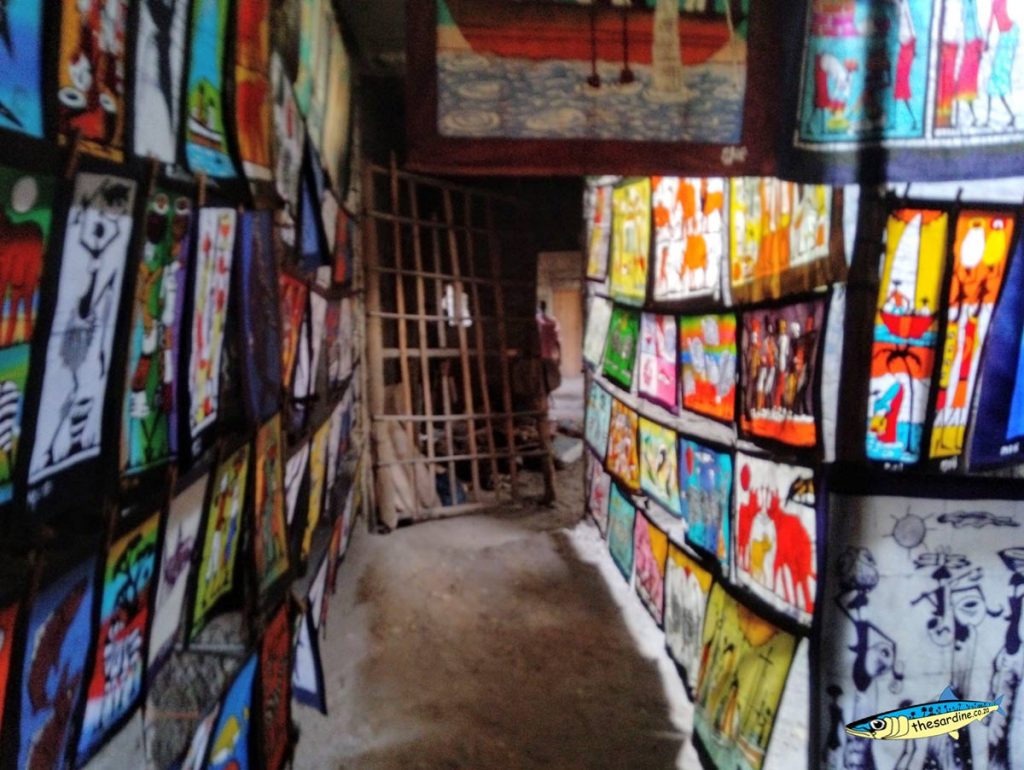From HDPE bottle caps to whale shark
From bottle caps to whale shark…
Recycling at grassroots level...a project by The Sardine News to learn as much as we can about recyclable plastics, and to share these resources with everyone we can.
Scene: Tofo, in southern Mozambique…famous for its whale sharks and other rich marine life. And a favourite for tourists with surfing, diving and fishing activities daily. Everybody loves Tofo!
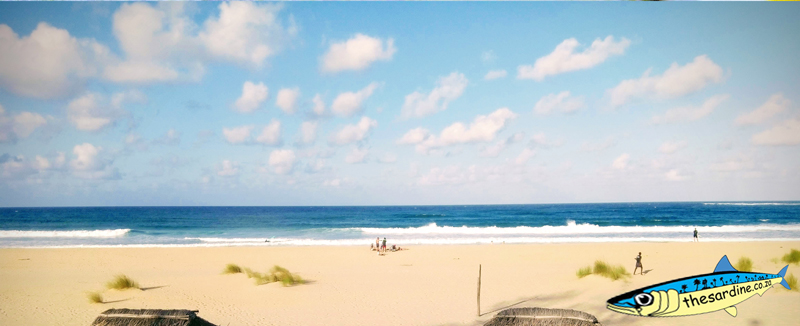
And the Tofo market too.
Plastic bottle caps are everywhere. All types. All colours. It never took a few minutes for the kids to collect a few sacks for cash.

It’s mainly water and fizzy drink caps. The sheer amount of them lying around half-buried in the sand is boggling. It’s gonna take us years to pick them all up?!
In the meantime, Manecas, the artisanal woodcarver dude deep in the souvenir section of the market complex, was hard at work making a mould. Normally carving positives, it never took him long to adapt to carving out the negative, without a plug or any regular reference. Except me offering basic depths and shape, Manecas produced our first whale shark mould. He dried/scalded it in the fire to dry and seal it as best we could with our totally limited resources. It got a coat of some sort of paint.

We separated the many lids into their exact groups. And chose to work with the ones labelled as Number 2. HDPE. High-density polyurethane to be exact. This stuff melts at a very manageable temperature. In it’s purest form, you need only about 115 degrees Celsius to get working.
Ok, time to melt!
The fire had been taken care of by Madala, the Rasta musician who also makes art by hand, in the marketplace, for extra bucks. The “hot plate” thing we had been carrying from Jhb, where it was made by Johnny van Biljon at NuStyle Steel, to Botswana, went into the flames. Botswana is where we started this project (Plastic Recycling at Grass Roots). In the Tsodilo Hills, very, very far north. In deep bush.
It takes about 25 lids to cover the tray, and they melt fast, real fast. Especially once we really get going. The guys just mix it all together when it reaches melting point and becomes like a gluey paste. Then they scoop it out and shove it in the mould. Using a wet hammer, they knock the air bubbles out and as it dries, try to get a cool finish all round.
It’s important to note here, that HDPE, is easily melted, and so never has to near burning, which happens at about 160 degrees. And then, if it burns, releases CO2, which is not good for us. So a ventilated area is a pre-requisite in any event. The “hot plate” we use, keeps the flames well away from the melted plastic, and we have never to this day, set the plastic on fire. It is also important to note, that burning anything produces CO2. And that plastic is actually made up of the exact same composition as – WOOD! Yip, the wood was made into fossil fuels, we rip it out of the ground, and make it into plastic. When it burns, without additives, it is like burning wood. This is why it is ok, to gassify some plastics. The gasses produced ar O,s, some C’s and H’s. Inert. And the gas harvestable from a gasifier.
Back to our grassroots plastic recycling project turning bottle caps into little whale sharks…
Then, as it feels right, a few shakes by the tail, and out pops a really cute looking little whale shark. Sans middle fin and other detail.
Then it goes for finishing, where the edges are trimmed, and some sandpaper takes the roughness off to a point. It get’s a hole from Madala making it into the coolest keyring on the planet right now.
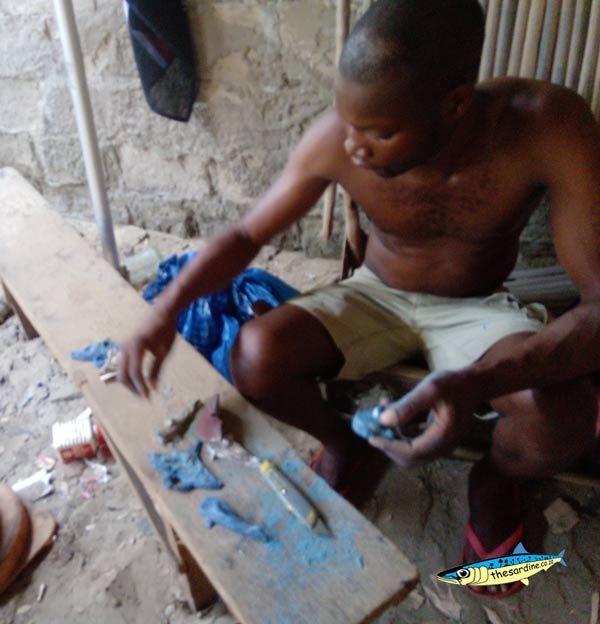
And…the final product. Well, these were number one and number two. And we have improved a tad. But that is not the point. We will get better, and make more beautiful artworks, but in the meantime, you cannot find a bottle cap ANYWHERE in the Tofo beach area.

Fortunately, we were camera out on this momentous first day of whale shark making with HDPE bottle caps.
And so you can watch the unfolding of it all too. So much fun.
Today we are making king mackerel plugs to make moulds in concrete with, as we up our game, day by day.
Click the following YouTube link to follow our video series on this grassroots plastic recycling education project by The Sardine News.
https://www.youtube.com/user/umzimkulu1?sub_confirmation=1
If you would like to assist or get involved with our grassroots plastic education project, please get in touch with Sean on umzimkulu@gmail.com or WhatsApp +27 79 326 971.

